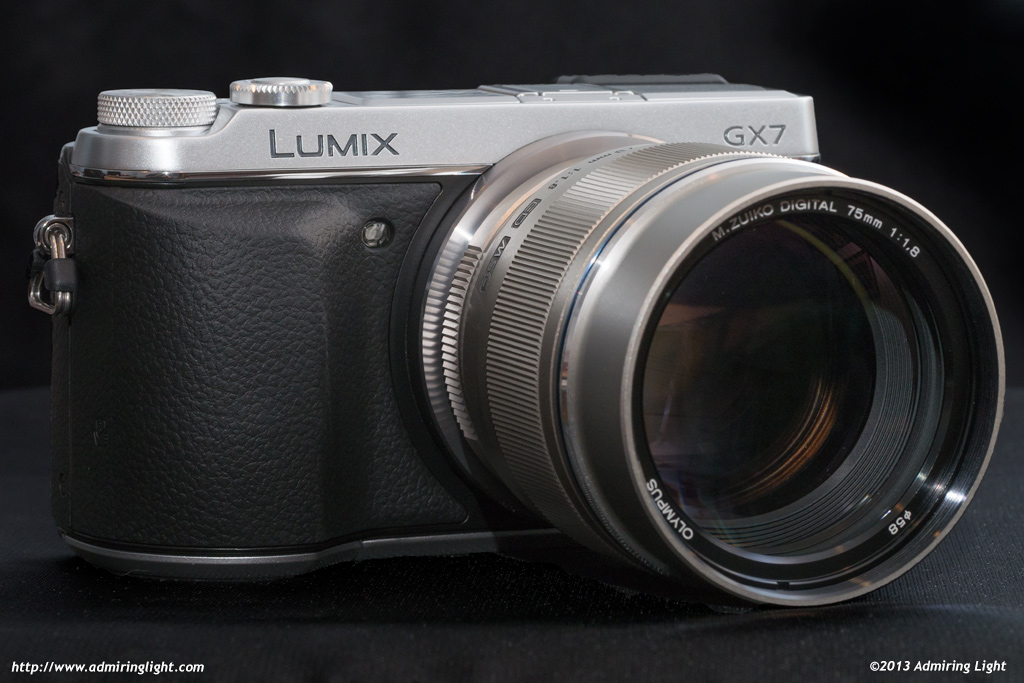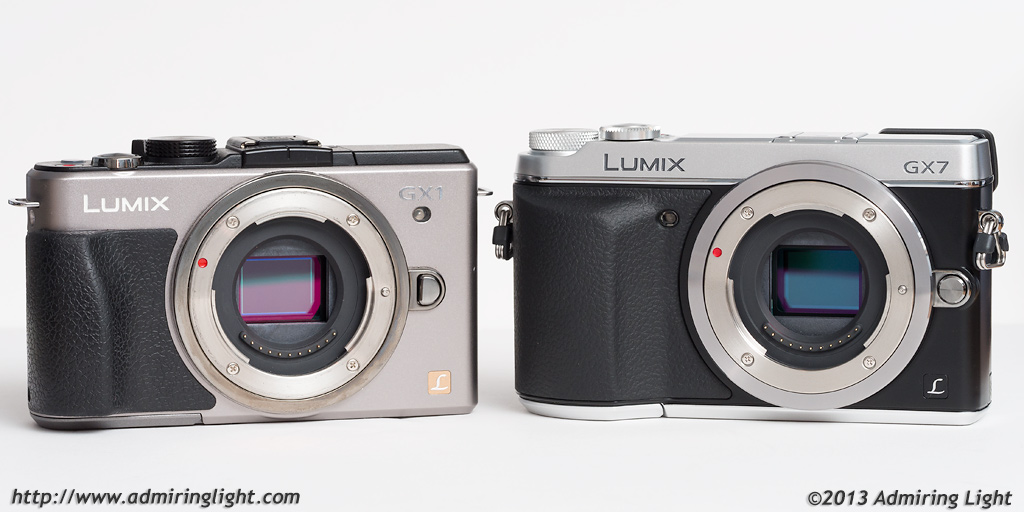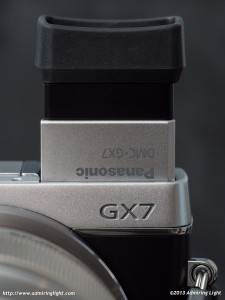Panasonic has released a staggering 16 Micro 4/3 cameras in the past five years. Some have been truly stellar, others mere refreshes or dumbing down of previous cameras. When Panasonic’s first rangefinder styled camera, the GF1, was released, people flocked to it. It’s small form factor, simple lines, responsiveness and level of control were outstanding. Panasonic then decided to take the GF line towards the consumer end, and the following GF cameras were generally downgrades from the GF1. Not until 2011’s GX1 (reviewed here) did Panasonic finally create a worthy successor to the GF1.

Now the GX line, which is Panasonic’s high-end rangefinder styled line, gains a new member – the GX7. However, instead of working on incremental upgrades to the GX1, Panasonic essentially grabbed every desirable feature from other Panasonic cameras and from around the mirrorless world, and shoved them all into a single body. The GX7 in many ways is a sort of ‘second flagship’ camera for Panasonic, which, along with the GH3 (reviewed here), is designed for enthusiasts and professionals who want a highly capable body in a small package.
If you’re not familiar with my reviews, I review from a real world shooting perspective. You won’t find lens charts or resolution numbers here. There are plenty of other sites that cover those. I review products on how they act for me as a photographic tool. I am not a videographer, so my reviews concentrate on the still imaging capabilities of a camera.
Body and Ergonomics
Because the GX7 has a more rangefinder styled body, Panasonic included it in the now two member deep GX line. However, the camera feels in the hand much more like a G6 that has been made smaller than a GX1 that has gained new features and a viewfinder. Indeed, it is notably larger than the GX1 that came before it, though not excessively so.

The camera has a thick sculpted rubber hand grip to go along with the sleek, almost-but-not-quite retro body design. The grip feels fantastic in the hand. It’s not too thick as to make the camera bulky, but it provides enough grip to handle well with even the largest Micro 4/3 lenses. The rear of the camera is flooded with buttons, but the rubber grip wraps around to the back to provide a gripping area for your thumb. I do wish the landing area for the thumb was more sculpted, as there is no real tactile ‘place’ for your thumb…something like the Olympus OM-D E-M5’s rear thumb rest or the GX1’s thumb pad would be welcome here. Still, the camera feels great in the hand.
The GX7 comes in a two toned black and silver body, and an all-black version. The styling looks similar in many ways to the styling used on some other mirrorless cameras…notably the Fuji X-E1 and the Olympus E-P5, though Panasonic’s version is a little more modern in design. The camera is clad in a well-finished painted aluminum and the build quality is rock solid, with absolutely no creaks or flexing whatsoever.

The front two metal dials on top are finished beautifully and have very positive clicks. The mode dial has plenty of resistance, so you won’t accidentally knock the dial out of position, even though your finger arches over the mode dial to get to the shutter button. The shutter button looks like it may be poorly positioned when you first look at the GX7, but in practice it sits naturally under your finger. The dial surrounding it, though, is slightly harder to actuate due to the angle at which your finger approaches. This is a minor thing, though, and I was still easily able to change settings when desired.
The top of the camera also houses the built-in pop-up flash that can be manually tilted to provide some bounce flash, as well as a standard ISO hotshoe for external flash use. Next to the hotshoe sits the camera’s breakout feature: the tilting viewfinder.
Viewfinder and Screen

The most notable addition to the GX7 is the inclusion of a unique tilting corner Electronic Viewfinder (EVF). The GX7’s EVF protrudes slightly to the rear, but can be articulated at any angle up to 90 degrees, allowing for easier composition of low angle shots. The EVF in the GX7 is the best ever on a Panasonic body. The optics are notably clearer than those used in the GH3, and the high resolution 2.76 million dot finder is clear and crisp, with good contrast and color. It provides a relatively large view, though not among the largest, and a little smaller than earlier Panasonic viewfinders (though much higher resolution). Part of the reason for this is that it’s a 16:9 aspect ratio viewfinder, and while the 16:9 view when shooting video is utterly gorgeous (and very large), when shooting stills, the viewfinder is pillarboxed and smaller as a result.

In my review of the Panasonic GH3, I noted that this pillarboxing of the viewfinder was distracting and made me feel disconnected to the scene. While this was true on the GH3, the GX7 doesn’t suffer the same fate. Since the viewfinder in the GX7 has such nice rich blacks, the pillarboxes don’t distract like they did on the GH3. The EVF features a very high refresh rate, and while it does slow down a bit in dim light, the lag doesn’t pose a problem for getting the shot. Noise is also well controlled in the EVF in low light. Overall, it’s an excellent finder, and probably the second-best EVF I’ve used, next to the utterly spectacular Olympus VF-4.
The rear screen on the GX7 a 3″ tilting LCD with 1.04 million dots. It’s an outstanding rear screen, with capacitive touch and crystal clear images. The screen has great color and contrast and is an excellent tool for composing and reviewing images.





Leave a Reply